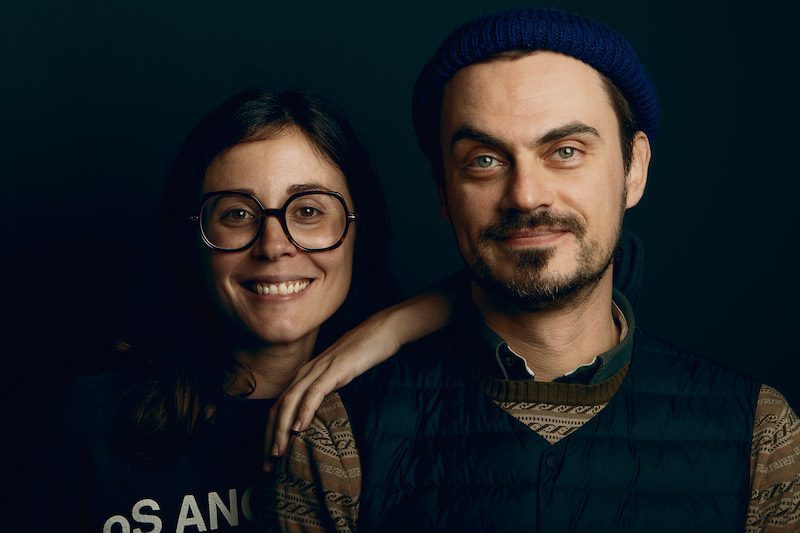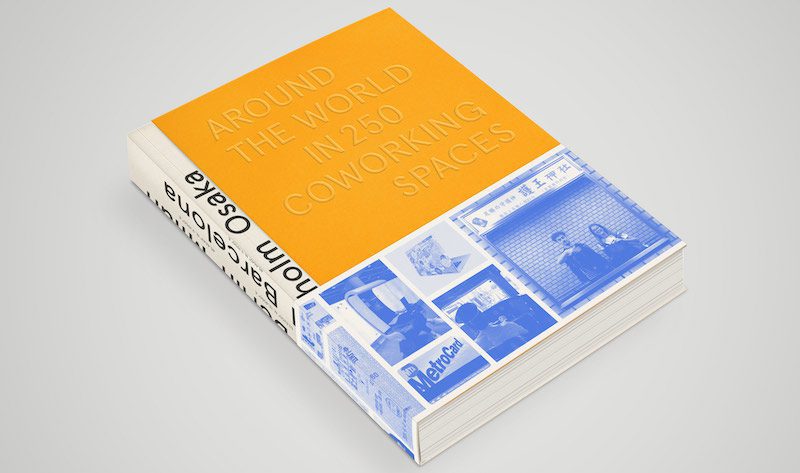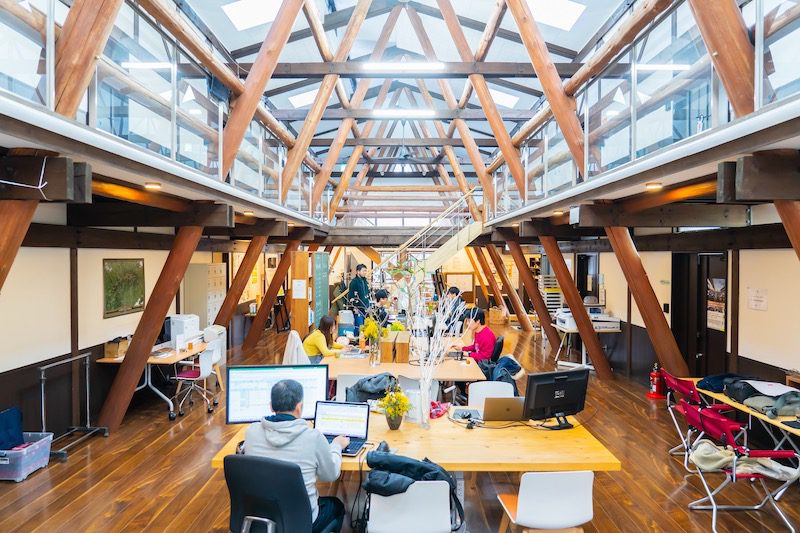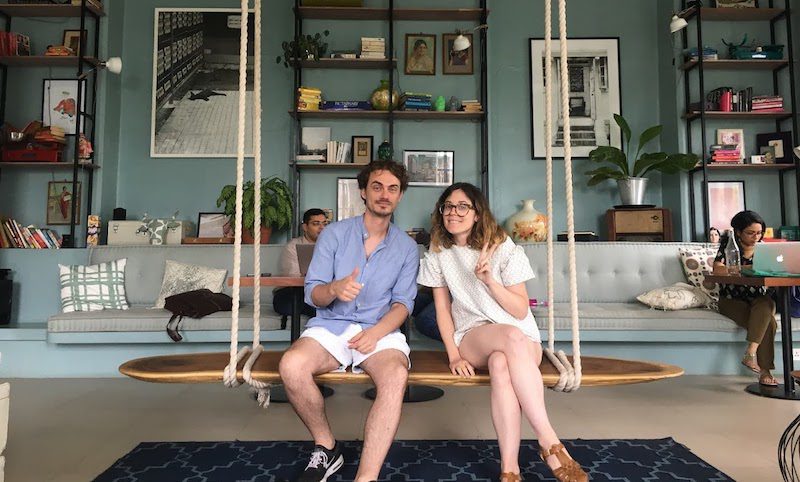THRIVE is part of a global coworking movement. We speak with a hybrid workspace advocate who has traveled the world, taking a deep dive into the coworking community.
Coworking spaces around the world have transformed the work experience for professionals like Pauline Roussel. Eight years ago, Pauline was stuck in a conventional office job at a marketing agency in Paris, where going to work lacked significance. Reflecting on that time, she shares, “The office was merely a place I had to be; I never felt at the center of something.” However, the advent of coworking spaces globally has redefined her perspective, providing a sense of purpose and connection in her work life.
But then she got hired to help run a coworking space in Berlin, and the job came with a pretty great title: Chief Happiness Officer. She grew fascinated with the way coworking spaces represented something different: a workplace defined by individuals who come together to form a community by choice. It was there she met Dimitar Inchev, and together they founded Coworkies, a job board and networking platform for coworking spaces around the world.

Over the last few years, Roussel and Inchev have visited more than 500 coworking spaces in nearly 50 different locales. Their research took them to big cities and tiny hamlets, from India to Norway, touring spaces located in disused breweries, shipping containers and even high-end hotel lobbies. Last year, they published Around the World in 250 Coworking Spaces, a look at some of the most surprising and inventive concepts in coworking. The book profiles spaces ranging from a communal salon in Moscow for makeup artists and hairdressers to a co-living retreat in Spain; there’s even a chic Paris office where member perks include a weekly shoe-polishing service.
“For us, the definition of coworking is not just simply a collaborative office. It’s really one where people are at the heart,” says Roussel. Here, she shares insights from her travels.

What makes a great coworking place?
A great coworking space is one where the founders have a very clear mission and vision. It’s not just about tables and chairs, or optimizing your square footage so you can generate more revenue. You have to have a clear idea why you want to do this. We think spaces are not exactly competing with each other; we say that coworking is the same dish that everyone cooks differently. The experience you craft can be very different from one space to another.
For example, I love spaces that are a revitalization of existing structures. One, in Bulgaria, used to be a former garment factory; in the Czech Republic, they converted what used to be a distillery into a coworking space. It had an elevator that they turned into a bar — “the smallest bar on earth” — and a backyard where people could go to have a drink and socialize after work. In Mumbai, they converted an old colonial building and it’s been named the third most beautiful coworking place on earth.
What was the most remote place you went?
In Japan, we went to a village located about two-and-a-half hours from Tokyo. The journey was beautiful, going past Mount Fuji to a bucolic mountain village with a tiny railway station. The coworking space is located in what used to be a summer camp for kids, with very typical Japanese architecture. It was culture shock in a good way: You had to wear house shoes inside. It’s so peaceful there, surrounded by a huge forest. People go hiking in the summer and snowboarding in the winter.

What about work cultures — do they differ from one country to the next?
Culture definitely plays a role in the daily life of spaces, and even within Europe there are differences. Germans, for instance, go to work very early, so coworking spaces tend to open by about 8 am, and people would leave earlier too, around 5 pm. Whereas in France, people go to work much later, like 10, but they also work until 7. So you would not have any after-work events starting at 5. In the Nordics — Sweden, Finland and Denmark — it was very surprising to see that a lot of coworking spaces have canteens [cafeterias] within their facilities, and lunch is included in the membership fee. Lunch is served every day at the same time and people go and eat together. We’d never seen that before!
Which city has the most stylish coworkers?
Either Copenhagen or Tokyo. People in London always smell divine. And whenever we go to a coworking space in New York, there is always someone who just stands out.
Which had the best coffee?
Milan. We also had great coffee in Istanbul at a coffice — like, “cafe-office.”
Which had the best bathrooms?
In Asia, in general, they are super creative with bathrooms. In Bangkok, some of the bathrooms had a little stage where apparently sometimes people play music or whatever. And I can’t not mention Japan: In Tokyo they have those Toto toilets; you can put music on so nobody hears you, the seat can be heated. It’s just a whole experience.
What were some of the best ideas you saw?
One of the things we really found interesting was the idea of gamification in coworking. Community engagement is always a challenge; you want the member to give back to the community somehow, and it’s not always easy. In Kuala Lumpur, we saw a coworking space that had created an app that let members earn coins by, for example, collaborating with another member of the space, or cleaning up the kitchen. And then you can use those coins to get a free coffee, or a discount on one of the group trips they planned, to go scuba diving or something like that.

I also like spaces that provide different kinds of seating, not just office chairs but also treadmill desks or couches. A lot of places we visited had nap rooms, some with white noise machines and light therapy. And changing rooms are a simple thing, but very useful especially in places where the weather gets super-hot or cold. In Canada or Spain or Berlin, when you cycle to work, it’s great to have a room where you can change clothes.
What did you hear from people who work at these spaces? What do they want from the workplace of the future?
Coworking definitely has a bright future. It’s on the rise, and as we are entering a recession, especially here in Europe, a lot of the spaces are getting full because companies are getting rid of their offices. Before COVID, a lot of the coworking spaces were trying to be where businesses are. But with the pandemic, we see a lot of spaces going into more residential neighborhoods, and people are saying it’s helped them reconnect with where they actually live. Members also see the value of being connected to others in a world that is getting more and more digital. We are tired of the Zoom calls. Coworking spaces allow people to meet, make business connections, fall in love, or just be a landing pad to help you integrate into a new city.
What surprised you most?
It struck me that coworking is an intergenerational place: The youngest member we saw was 3 months old, because one space had a daycare. The oldest was 87, at Senior Planet in New York. They teach the elderly about technology so they can remain relevant in society, with courses like “All Things Zoom” and “How to Spot Fake News.” This member we met was sewing gloves, and she wanted to learn how to use Etsy to sell the gloves that she was making. That diversity is something I really appreciate: No matter who you are, whether you’re 3 months old or 87, whether you’re a person of color or LGBTQI+, there is a space for you.
To learn more about the book — as well as the AW250CS members club, a forum for coworking enthusiasts and industry professionals — visit Coworkiesbook.com.
And if all this whets your appetite for taking your coworking show on the road, you should note that THRIVE is now a part of the League of Extraordinary Coworking Spaces (LexC, for short). It’s a network of more than 100 coworking communities across North America, as well as Africa and Australia, and as a THRIVE member you’re entitled to free access to any of them, from Montreal to Sydney.




